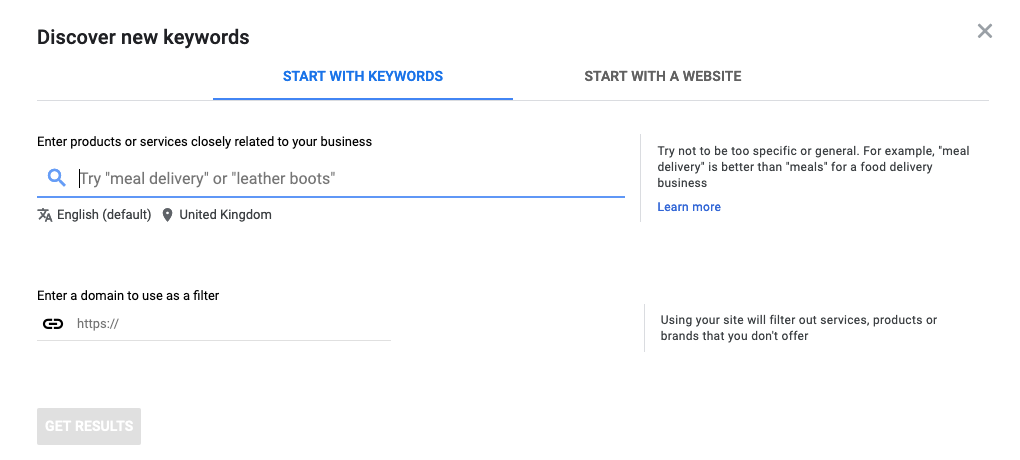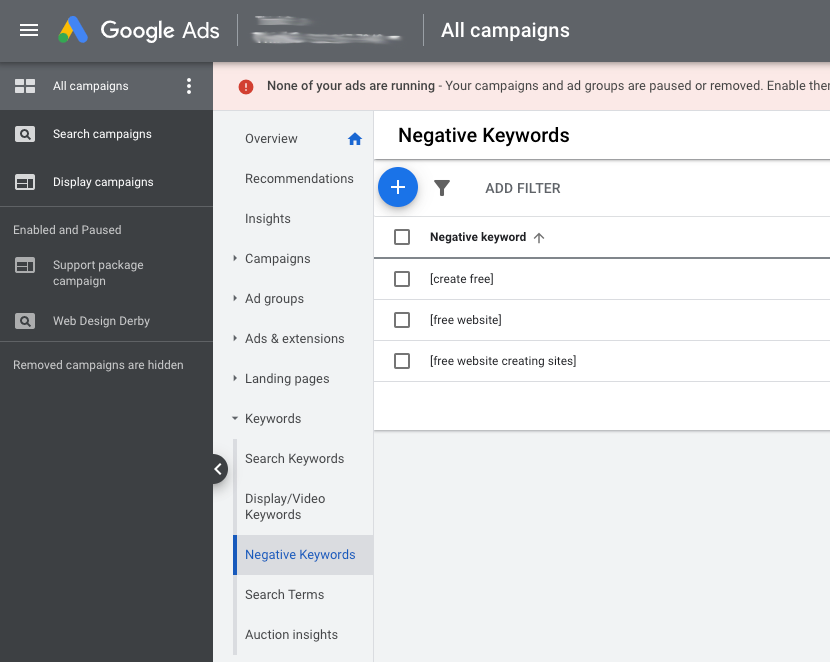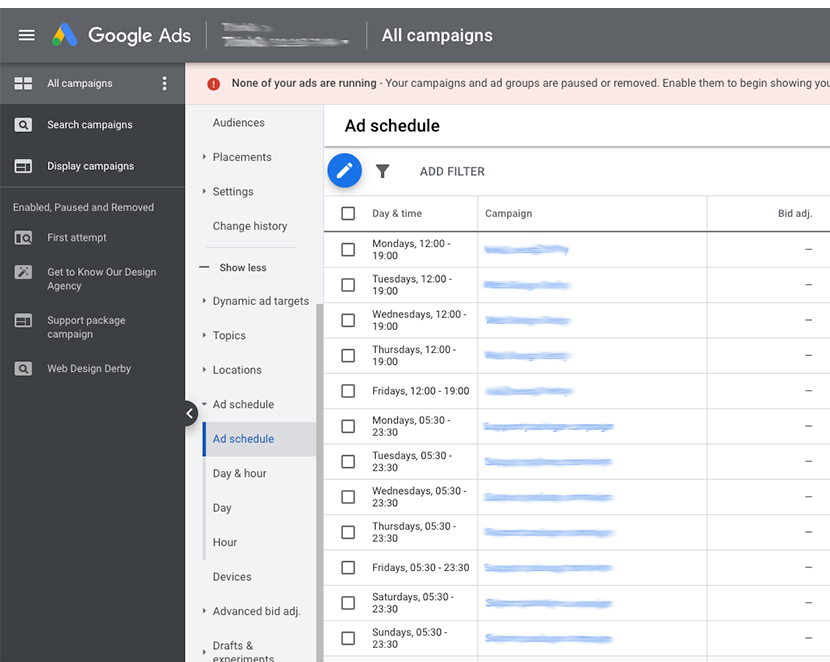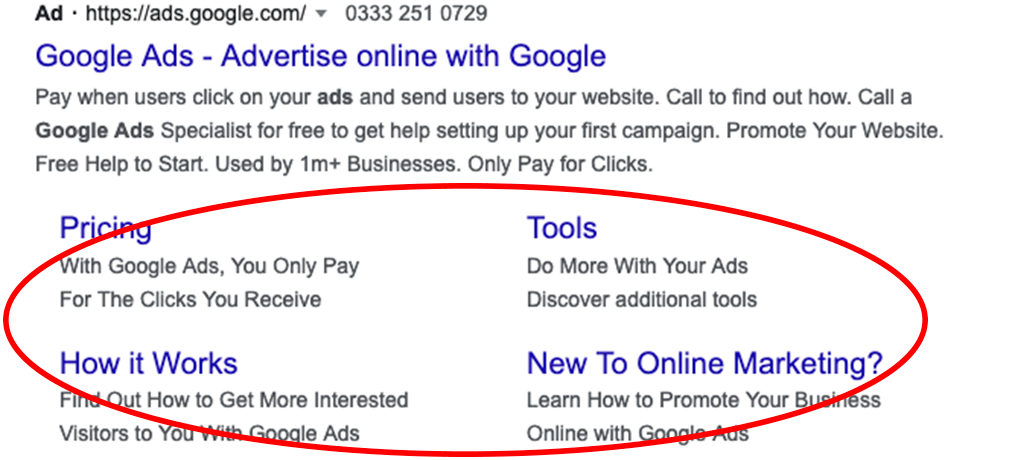5 tips to optimise your Google Ads Campaign
4th Oct 2021

Have you been looking for someone to tell you how to optimize your Google Ads Campaign? Well, you’ve come to the right place – we’ll explore our top 5 tips on optimising your Google Ads efforts, making your budget take you to the moon.
Make sure to stick around to the end, where we’ll explore the main Google Ads Campaign types!
1. Extensive Keyword Research for your Google Ads Campaign
Keywords are the most important building blocks to be successful with your Google PPC campaign – think about it as pouring the foundation when you’re building your dream house. It’s the process of sifting through google search traffic and finding the most relevant topics for your target audience.
Firstly, create a list of topic buckets you want your business to get discovered for. Take note of the monthly search volume of each topic. This will allow you to decide the importance of each topic and adjust your focus accordingly.
Once your topic buckets are ready to go, it’s time to do some detective work and identify keywords that fall into each of those buckets. Now you must start thinking about keyword relevance in the SERP (search engine results pages) – What are your target customers putting into the google search field?
Another clever method to approach Google PPC (pay-per-click) is to work out how people are finding your website already. Go on an expedition to discover the website’s traffic sources and capture all the ‘wild’ keywords people are using to find you.
SEO is ever-changing and constantly evolving process. One of the most crucial factors in this process is search intent. Simply put – you must see the deeper meaning behind the keywords. Before committing, make sure that the keywords you are targeting are closely related to the content you are putting out.
For a more in-depth look into conducting keyword research, check out: How to Do Keyword Research.

2. Regular Negative Keyword Implementation to optimise Google Ads Campaign
One of Google Adwords campaigns offered functionalities is “Negative Keywords”. Think of them as another method to make your budget last longer. Identify the ‘evil’ keywords that are taking your valuable budget away from your Google Ads Campaign without bringing any value.
By utilizing the full power of negative keywords, you will see an increase in your CTR (click-through rate); a Better conversion rate (percentage of customers who convert because of your ad), and an improved Quality Score (better quality score – more money saved).
Lastly, do not go overboard – too many negative keywords may lead your ads stranded on a desert island with no one to see them.
For a more detailed explanation of Negative Keywords; we’re handing it over to Google themselves.

3. Location and Ad Schedule Optimisation
Optimising Google Ads in terms of Location and Scheduling allows you to set up your own playing field. When and where to approach your desired customers’ search results.
Why optimise in terms of Location? If your customers are based in Europe, you do not want to show up on search results in South America. The same rules apply to local businesses (it’s also worth looking into digital marketing strategies for local businesses) – if you’re a coffee shop based in Derby, appearing in search results of someone in Glasgow won’t take you very far.
To schedule your ads successfully – understand the search trends of your customers and when search volumes are the highest. If you’re a B2B business, the search volume will go down exponentially out of business hours. On the other hand, if you are advertising an e-commerce business – customers might be searching 24\7.
At the end of the day, the better your Google Ads Optimisation is – the more cost-efficient result you get.

4. Utilize Google Ad Extensions
Ad Extensions are a way to further optimise your Google Ads Campaign and give it that extra ‘spice’. Initially, Ad Extensions are a way to add additional information under your text ads, increase your visibility on Google search and improve the clickthrough rate.
There are 2 types of Ad Extensions:
- Manual – you chose the type of extension to use and what content to use for it.
- Automatic – Google takes relevant information out of various sources and creates extensions for you.
Moreover, it’s important to choose the correct manual extensions, based on your goals. If you want customers to visit your physical store – use location extensions; If you want people to download your app – use app extensions.
Why? To bring more value to your adverts and make the Google Ads Campaign budget last longer.

5. Relevant Ad Content for your Google Ads Campaign
Make Ad Content personal – tell your customers why your product/service is the correct choice. Focus on creating multiple ads, that are tailored to segments you are trying to reach.
Secondly, figure out which stage of the buying process your potential customers are at. If you’re trying to reach new leads, you’re best off targeting people by using the audience tools in Google Ads search campaigns. They allow you to choose groups of people, to target, by their general interests.
Additionally, focus on setting up your landing page correctly. People are very impatient and most of the time, if a person can’t find what the ad was selling on the landing page, they are gone without even saying goodbye.
Also, do not overlook the power of retargeting. Once a potential customer visits your website, Google Analytics gathers relevant data about them. Use it to tailor your ads to be highly specific and try bringing back prospective customers to finish their purchases.
Keyword insertion is another powerful technique to implement whilst executing your Google Ads Campaign. Adding the search term to the headline makes the ad more personal and relevant, it also can increase CTR. For example, if you’re selling shoes the headline would be: Buy {KeyWord: Shoes}; but in this scenario – the code will get replaced by Google Ads, depending on the person’s search term, with one of your keywords from your ad group (e.g. “trainers”, “running shoes”, etc.), but when it’s not applicable, it’ll just use “Shoes”.
Lastly, the more ads you run – the more data you will gather. Data allows you to tailor your website and ads to be more specific and useful to your potential customers. In the Google Ads game, data is always king!
A deeper dive into Content Marketing.
Summary
At the end of the day, the more you optimise your Google Ads Campaign the more value you get for your money. The benefits are clear as that, but keep in mind that running successful Google PPC campaigns is an ongoing process that requires a good understanding, usage of data, and lots of time invested.
What are the main Google Ads campaign types?
- Search Campaigns – text ads on Google Search results.
- Display Campaigns – image ads on websites.
- Video Campaigns – video ads on YouTube.
- Shopping Campaigns – product listing on Google Search.
- App Campaigns – promoting your app.



